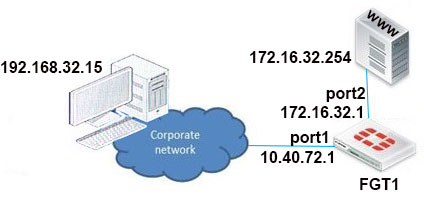View the exhibit.

In this scenario, FGT1 has the following routing table:
S* 0. 0. 0. 0/0 [10/0] via 10. 40. 72. 2, port1
C 172. 16. 32. 0/24 is directly connected, port2
C 10. 40. 72. 0/30 is directly connected, port1
A user at 192.168.32.15 is trying to access the web server at 172.16.32.254. Which of the following statements best describe how the FortiGate will perform reverse path forwarding checks on this traffic? (Choose two.)